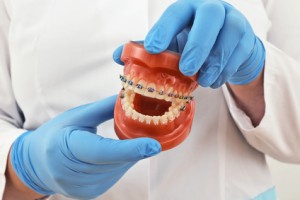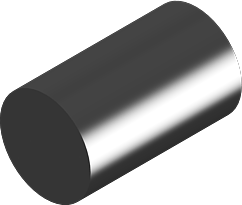MP35N
View AMS Numbers >
Cobalt MP35N
Cobalt M35N is a Multiphase cobalt-based alloy with a high percentage of nickel, chromium, and molybdenum. Like similar alloys, M35N is non-magnetic. Further, it is characterized by an ultra-high tensile strength of up to 300 ksi (2070 mPa), depending on the work-strengthening method used, good ductility, excellent toughness, and biocompatibility. This alloy can be used in the fully-hardened condition at service temperatures up to 750° F (400° C).
Thanks to the use of cobalt, nickel, and molybdenum, M35N shows excellent stress corrosion cracking resistance, pitting corrosion resistance, grain boundary attack, and crevice corrosion resistance. This alloy is better than comparable products when it comes to stress-corrosion cracking in hostile environments. MP35N alloy resists corrosion in a variety of different solutions, including hydrogen sulfide, seawater, and other chloride solutions, as well as mineral acids, such as nitric acid, hydrochloric acid, and sulphuric acid. The high chromium content additionally helps this alloy achieve excellent oxidation resistance at higher temperatures but also sulfidation and chemical salt reaction.
To achieve these qualities, apart from the use of the aforementioned elements, M35N is produced with a vacuum induction melting and consumable vacuum arc re-melting methods. This approach produces very low levels of oxygen and nitrogen that might otherwise produce secondary phases.
Cobalt M35N finds use in many different fields that require excellent strength and toughness paired with outstanding corrosion resistance. Great examples of that are the Aircraft and Aerospace industries, which use this alloy for the manufacturing of springs and leading-edge strips. NASA even uses M35N for its space program due to its resistance to embrittlement in cryogenic temperatures.
Thanks to the biocompatibility, this alloy is used for orthodontic and prosthetic devices in the medical field. Thanks to its non-magnetic nature, M35N can also be used in high-pulse magnet research. The outstanding corrosion resistance, on the other hand, makes this cobalt-based alloy an outstanding choice for the manufacturing of valve components and springs in the Oil Industry, Chemical Industry, and for manufacturing of Marine Equipment. Finally, Cobalt M35N also finds use in the food-processing industry.
Tech Steel & Materials offers Cobalt M35N in three AMS and three ASTM sub-type specifications:
- AMS 5758 (Bar)
- AMS 5844 (Bar)
- AMS 5845 (Bar)
- ASTM F562-13
- ASTM F688-14 (Plate, Sheet, and Foil)
- ASTM F961-14 (Forge Stock)
Chemical Composition of Cobalt M35N
| Element | min | max |
| Carbon, C | — | 0.025 |
| Manganese, Mn | — | 0.15 |
| Silicon, Si | — | 0.15 |
| Phosphorus, P | — | 0.015 |
| Sulfur, S | — | 0.010 |
| Nickel, Ni | 33.00 | 37.00 |
| Chromium, Cr | 19.00 | 21.00 |
| Iron, Fe | — | 1.00 |
| Molybdenum, Mo | 9.00 | 10.50 |
| Titanium, Ti | — | 1.00 |
| Cobalt, Co | Balance* | |
*Not exclusively to the element mentioned, but that one predominates other elements that are used only in minimal quantities.
Fabrication and Working Instructions
Thanks to its good ductility, Cobalt M35N can be cold-worked and formed with many common processes and practices. Like similar alloys, M35N can be work-strengthened by extruding, drawing, rolling, and swaging. The tensile strength of the cold-worked parts can be additionally improved by heat treatment followed by an aging process. M35N alloy can be readily welded using TIG processes and shows excellent machinability.
Mechanical and Physical Properties
| Property | Imperial | Metric |
| Density | 0.309 lb/in3 | 8.55 g/cm3 |
| Hardness, Rockwell B | 90 | 90 |
| Ultimate Tensile Strength (Annealed condition) | 130000 psi | 896 MPa |
| Tensile Strength, Yield 0.2% (Annealing at 1925 °F or 1052 °C) |
55000 psi | 379 MPa |
| Elongation at Break (Annealed condition in 4D) | 65 % | 65 % |
| Reduction of Area | 75 % | 75 % |
| Modulus of Elasticity (Annealed) | 33760 ksi | 232.8 GPa |
| Modulus of Elasticity (Cold worked and aged) | 34050 ksi | 234.8 GPa |
| Modulus of Elasticity (Annealed at 900 °F or 482 °C) |
29150 ksi | 201.0 GPa |
| Modulus of Elasticity (Cold worked and aged at 900 °F or 482 °C) |
29190 ksi | 201.3 GPa |
| Shear Modulus (Annealed at 900 °F or 482 °C) |
9830 ksi | 67.8 GPa |
| Shear Modulus (Cold worked and aged at 900 °F or 482 °C) |
10240 ksi | 70.60 GPa |
| Shear Modulus (Annealed at 78 °F or 25.6 °C) |
11740 ksi | 80.94 GPa |
| Shear Modulus (Annealed at 78 °F or 25.6 °C) |
12090 ksi | 83.36 GPa |
Heat Treatment of Cobalt M35N
To achieve full strength of heavily cold-worked M35N alloy parts, an aging process of 4 hours at 1000° F to 1200° F (540° C to 650° C) is recommended. Better corrosion and sulfide resistance can be achieved by an aging process at 425° F (220° C), but in this case, the tensile strength will be much lower. Extremely high aging temperatures aren’t recommended as they might reduce the strength that was achieved with cold working.


 Tech Steel & Materials
Tech Steel & Materials